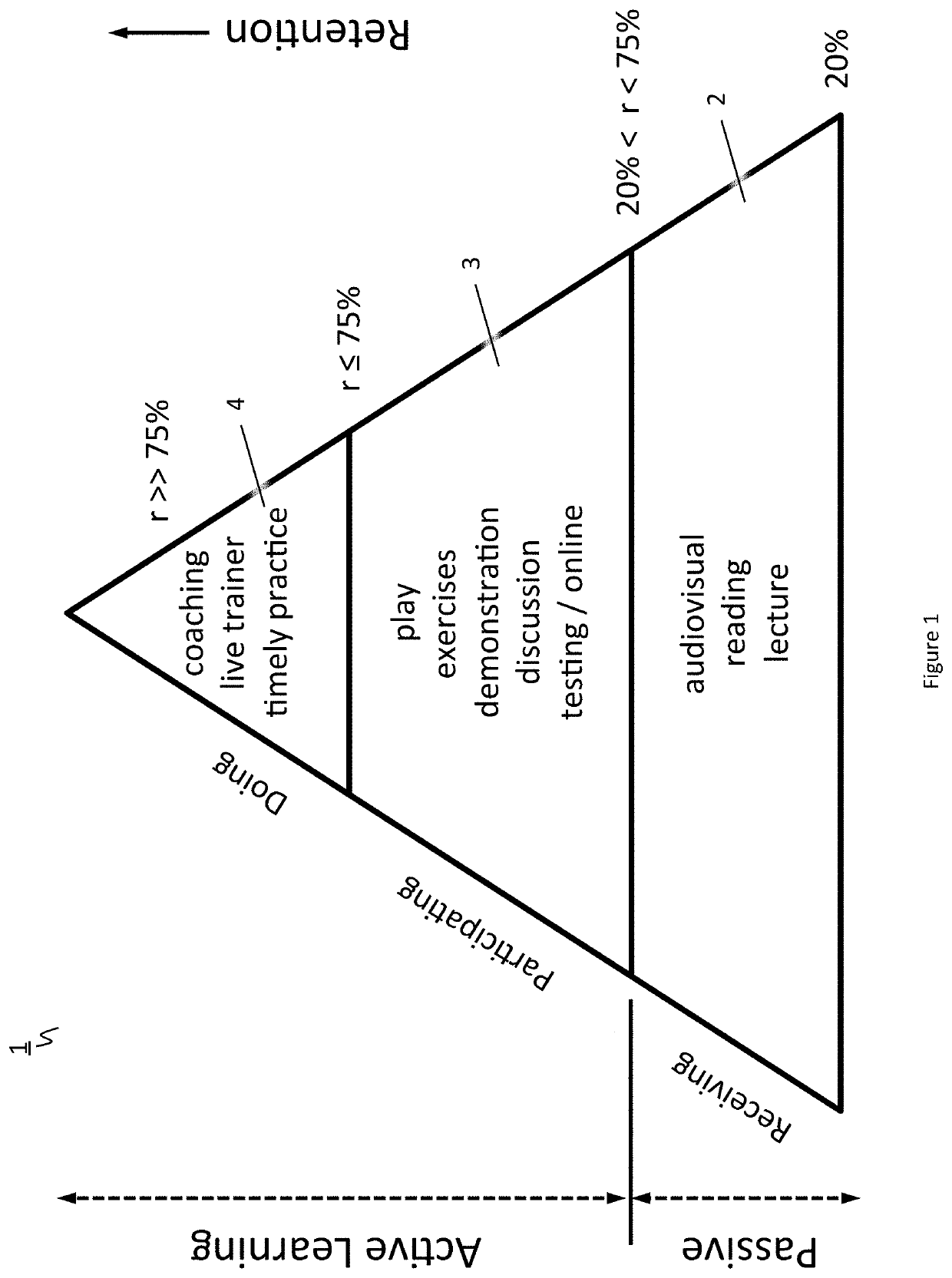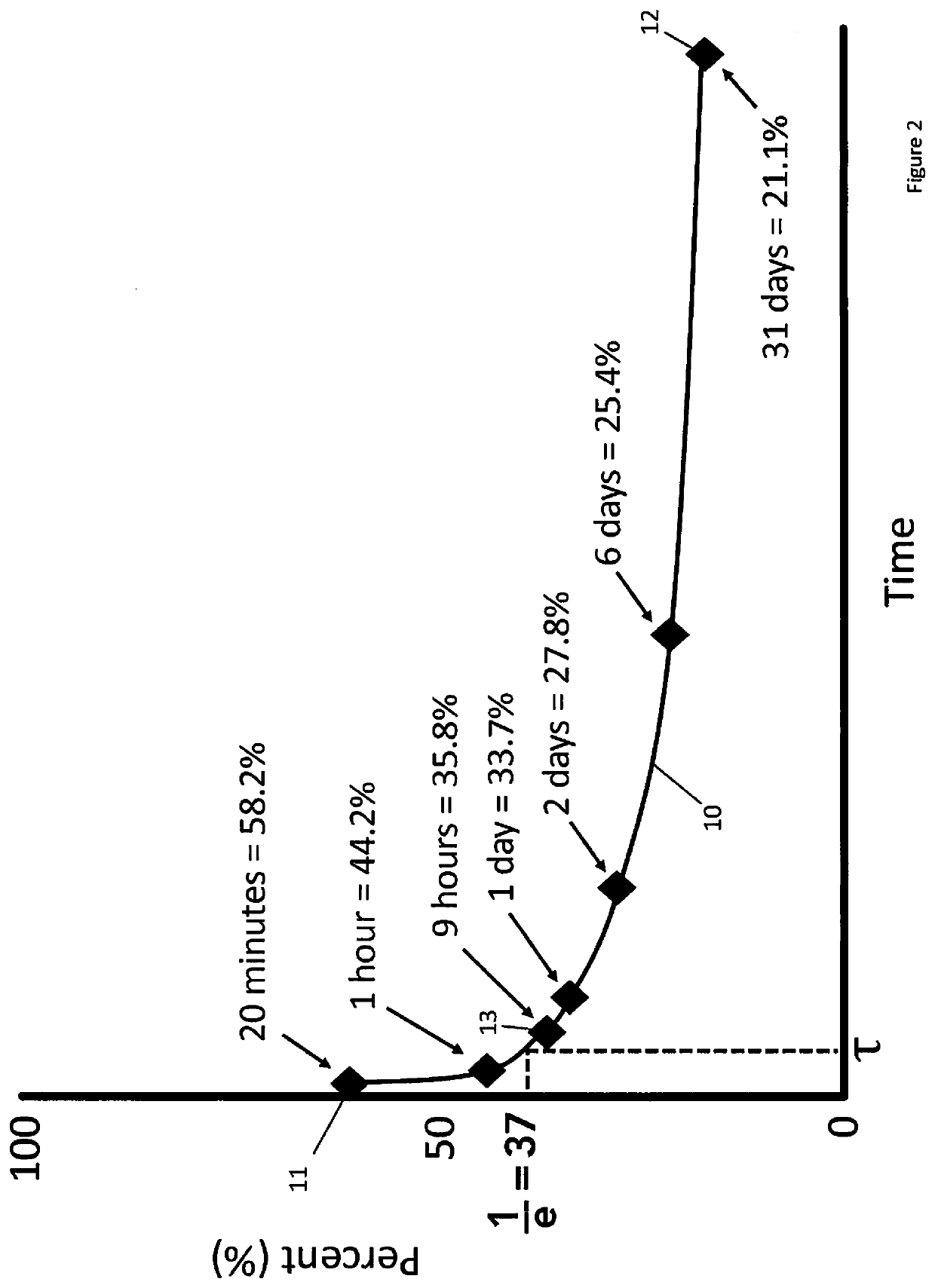And although studying may assist a student better understand what they are doing, it does little to improve to reveal “how” the task should be performed.
Receiving is particularly ineffective in teaching psychomotor skills involving eye-hand coordination since the student has no chance “to try it out” themselves.
In psychomotor training for sports or manual tasks, the student is still unable to execute the real motions thereby impairing learning.
Throwing a shot put, for example, cannot be learning by online testing.
Until a person picks up a shot put it is difficult to image how heavy it is or how to throw it without injuring oneself.
Tasks such as learning to fly an
airplane using computer-based training may emulate the operation of the
cockpit instruments but still lacks the accelerative forces a
pilot feels in a real
airplane or in a professional
flight simulator.
Coaching or personal trainer instruction through doing 4 generally accelerates a student or athlete's rate of progress while improving retention over 75% but suffers from high cost, the inconvenience of scheduling appointments and instructor availability, and by lack of feedback during solitary practice times.
The associative phase, which comprises the longest interval in psychomotor learning, is at risk that the fledgling athlete may practice the action incorrectly, i.e. learning a bad
habit that may be difficult to correct unless the problem is detected and corrected quickly.
If, however, the skill was learned incorrectly during the associative phase, it is nearly impossible to
undo and correct in the autonomous phase.
While such a premise is theoretically sound, pragmatically speaking it is nearly impossible to facilitate.
The longer the duration between “practice sessions”, the farther down the forgetting curve the student's retention slides, erasing the benefits of previously and laboriously climbing the
learning curve.
If the training sessions occur infrequently because of instructor availability, the results of active learning education are not significantly better than passive learning.
While this method may be useful for learning topical and conceptual
subject matter such as TED talks, the method is less beneficial in psychomotor learning.
Although watching videos of Tom Brady throwing a pass, Tiger Woods teeing off, or Venus Williams serving a
tennis ball might be insightful to study a pro's form or technique, a student cannot properly practice their movements while watching the video because they cannot see themselves.
Without the ability to make contemporaneous comparisons, however, there is a greater risk the student or trainee may learn the psychomotor skill incorrectly.
While the idea sounds appealing, these video-based image overlays don't work well in psychomotor training for innumerable reasons, one of the most significant being the fact that the heights of two people are unlikely to match, making it difficult to
overlay the images in a meaningful or useful way.
Simple linear scaling to match a reference video to a live camera view can also be problematic.
If however the
image resolution of the original video is insufficient, a common case for older videos, scaling the image of pro golfer 71 to a larger size 72 invariably will cause image ‘pixilation’, resulting in a blurry image useless for study.
Aside from resolution issues, the angle of the original reference video source may be a problem.
In such cases, a trainee is unable to see what golfer 75 is doing prior to his swing, rendering an A-B video comparison useless.
Even in cases where a reference video of a pro golfer employs a relevant
camera angle and is sufficient in resolution to scale without pixilation,
video image overlays can be problematic.
Because of the differing proportions, a meaningful visual
overlay for active learning is difficult to achieve even if the height of reference 85 is linearly scaled to perfectly match trainee 80.
Linear image scaling, however, assume the length of a human's body and appendages are proportionate to their height. FIG. 10 however illustrates this simplifying assumption is not correct.
This consideration means it is ill advised to
train a short golfer using a tall golfer as a reference.
Accordingly there can be no predefined assumption about the length of a persons arms, legs,
thorax, or height, meaning linear image scaling cannot be used to achieve contemporaneous
visualization superimposing a live image atop of a
reference image.
The complex motions required by
athletes in a tennis serve, pitching a baseball, or hitting a
golf ball further exacerbates the problem of scaling
video image overlays.
Aside from the aforementioned scaling issues, this complex motion is extremely difficult to mimic, especially synchronized to a video loop.
In short there is no way to naturally synchronize the trainee to the static video loop.
Another set of problems in visual overlays for psychomotor training occurs in the means by which to
overlay the video content and the
real image.
Since the color, size, location of trees, angle of the golfer's stance in the reference video all differ from the
live video stream, there is really no way for the trainee to naturally perceive the images or compare the actions.
The problem with such an approach is that both images show information the golfer doesn't care about (like trees) but clutters the images obscuring clear visuals ad important information the trainee wants to see, i.e. comparative body movements.
Using
optical processing to highlight the golfers relative to their backgrounds doesn't really help either.
The same problems occur for the
edge detection image 111b processed from the raw reference video 110b, except that the video may be even worse.
In summary A-B image overlays are not useful for psychomotor learning for a variety of uncorrectable conditions including the following:The student's
body size does not match the size of the expert, e.g. one is taller, bigger, etc.
;Available videos of the expert may be limited to poor resolution and taken at great distances, i.e. comprising a small image size that can't be scaled to a larger size;Available videos of the expert may be taken at an angle incapable of producing a face forward motion images
usable for training;The expert's physical features are disproportionate compared to the student so that even if the height is scaled, the legs, arms, or
torso doesn't match the student, i.e. images don't scale proportionally;Visual overlays using videos lack the ability to synchronize the motion images of the expert and student, uncomfortably forcing the student to mimic the video in speed and repetition rate;Videos lack
metrics of the expert's motion and of the student attempts, and offer no means to quantitatively compare the two.
The
impact of these aforementioned limitations is that
video based visual overlays have limited utility in psychomotor learning.
While motion tracking suits are amendable to
film making within the controlled environment of a closed movie set, adapting such methods to outdoor sports and competitive athletics remains problematic for many reasons including cost, complexity, durability (breakage), and inconvenience.
Moreover, body suits limit the
range of motion of an athlete affecting a golfer's swing, a pitcher's throw, and running back's mobility, etc.
Despite the hype, wearable
electronics have not been commercially successful.
This strategy also raises many issues.
Even if the teams like the idea, it remains unclear if the use of sensors violates league regulations.
The use of active sensors in school and professional sports competition also opens the possibility of data hacking.
In such scenarios, hacked sensor data could be used to challenge an official's ruling, cast doubt on the winner of a game, or lead to litigation.
In summary, there is no technology available today well suited for improving psychomotor training and learning.
 Login to View More
Login to View More  Login to View More
Login to View More 


